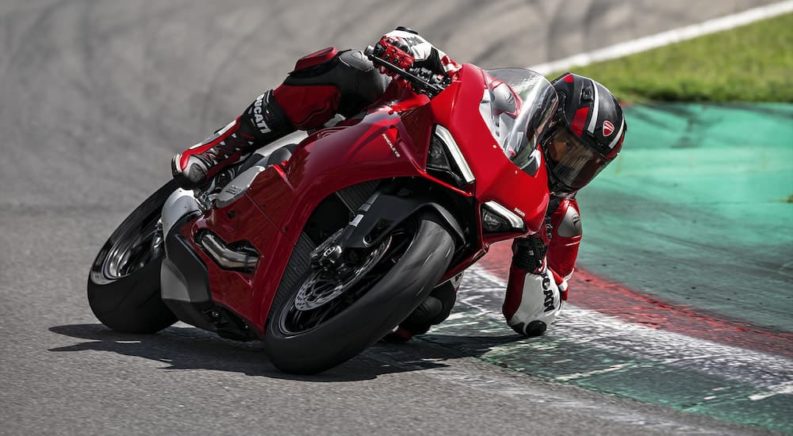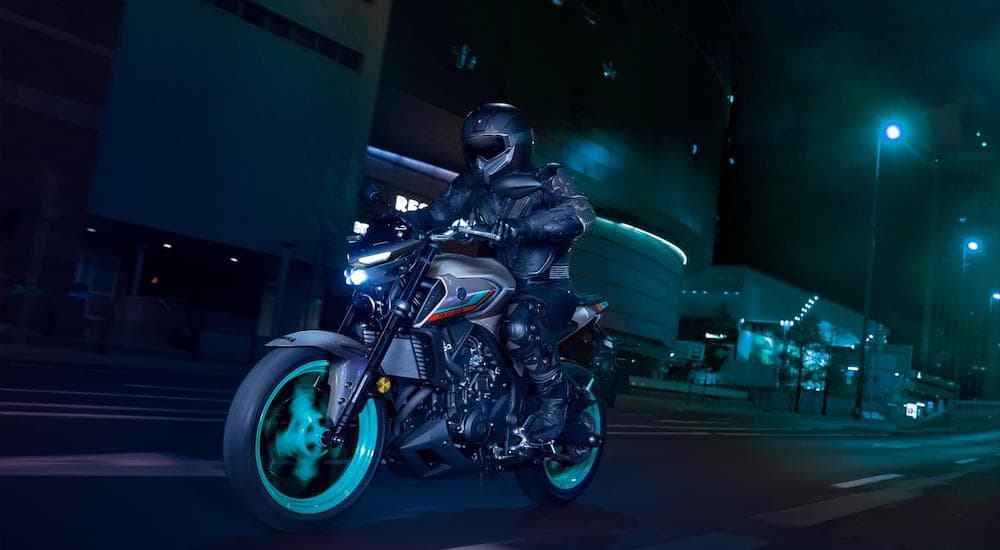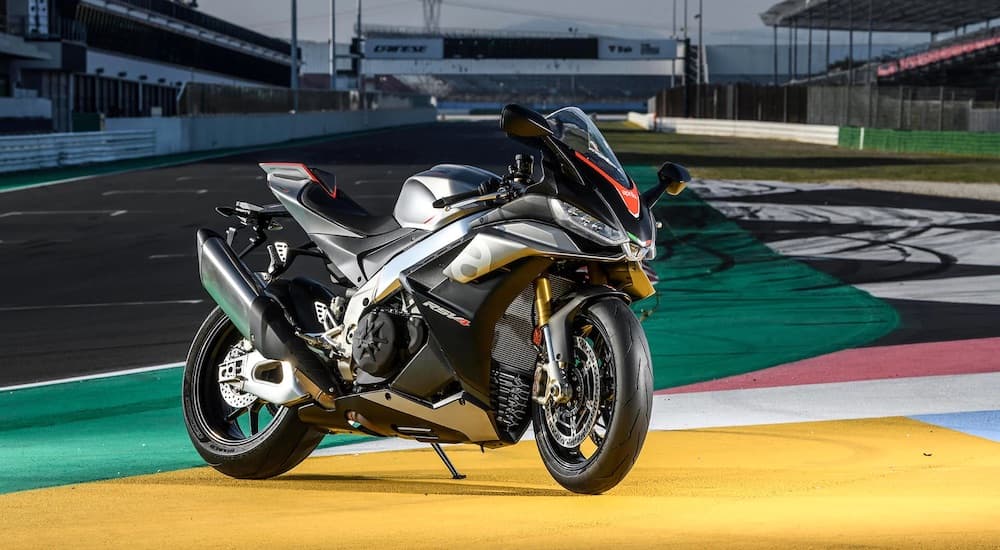Few things are better than navigating an open road with the wind in your hair, entirely exposed to the world outside. It’s one of the many joys of riding a motorcycle as you immerse yourself in the experience where all your senses are heightened. You can smell the freshly cut grass of the lawns you pass or the aroma of barbeque from a restaurant across the street just as easily as you hear the engine and know when it’s time to shift into a different gear. This immersive experience is what draws riders back to these two-wheeled powerhouses time and time again.
But where do motorcycles generate their power? As we’ve seen from the first part of this series, motorcycles come in various styles. There’s not a one-size-fits-all category, and that’s especially true when you look at the different types of motorcycle engines. Just as the cruiser is designed for long-distance travel and the enduro is meant for dirt bike rallies, their engines must keep up with these demands and unique needs. Here’s a closer look at the most popular motorcycle engines and their strengths and weaknesses.
Thumper
The simplest engine in the motorcycle segment is the single cylinder or “thumper.” Nicknamed for its up and down thumping motion, single-cylinder engines are simple and lightweight. They’re also incredibly affordable to build, meaning less overhead for the manufacturer and more savings for the consumer. Their uncomplicated design also makes them easy to maintain.
So, what’s the downside to owning a bike with a single-cylinder engine? First, don’t expect to find a motorcycle with a single cylinder powerplant larger than 700 ccs, and most are much smaller than that. Second, thumpers are notorious for producing a lot of vibration, making them less than ideal for experienced riders or those planning to spend a lot of time in the saddle. As a result, you’ll typically find a thumper engine in dirt bikes, scooters, and entry-level sport bikes like the Honda CBR300R.
V-Twin
The V-Twin is the most commonly used engine in motorcycles because it delivers outstanding power and stability without adding excessive weight. By design, a V-Twin positions two cylinders at an angle to form a V. Pretty simple, right? But what makes the V-Twin unique is that each cylinder is positioned in a separate block, a notable difference from a parallel-twin engine. This separation gives the V-Twin greater power, specifically low-end torque.
Harley-Davidson motorcycles are among the most popular V-Twin bikes in the industry. Other models include the Honda Shadow, Suzuki SV650, and Ducati Scrambler. But, what are the advantages and disadvantages of a V-Twin bike?
V-Twins are leaner engines, meaning they have a narrower profile that reduces the overall weight of a bike. This reduced weight makes V-Twin bikes incredibly powerful and responsive. However, this often comes at a premium, making most V-Twins more expensive, especially those with the Ducati name. Another common issue with the V-Twin is that it’s prone to overheating, especially on Ducati models where the rear cylinder is right below the saddle.
Parallel-Twin
The parallel or inline-twin engine has the same number of cylinders as the V-Twin. However, instead of positioning the cylinders in separate cylinder blocks, the parallel-twin places them side-by-side on the same block. As a result, the cylinders can be laid vertically or horizontally and are sometimes set with one in front of the other. When the cylinders are positioned horizontally, this configuration is known as a “Boxer” or “Flat” Twin, a layout found in most BMW bikes.
The advantage to a parallel-twin is that these engines are incredibly compact, making them ideal for sport and dirt bikes. In contrast, a boxer-twin offers a lower center of gravity but is incredibly wide, limiting the bike’s lean angle. In any instance, twin engines are relatively inexpensive to build and easy to maintain. So, what are the disadvantages?
Parallel-twins tend to produce excessive vibration at high speeds, which is why they’re often better for commuter motorcycles that spend less time on the highway. Also, while a thumper engine only goes up to around 700 ccs, you’ll find a parallel-twin gives you a broader range of power up to 1,000 ccs. This makes the twin more attractive to those looking for a mighty road warrior. Even more enticing is that there are plenty of options, such as the Honda Africa Twin, BMW F 850 GS, and the Triumph Bonneville.
Inline-Triple
The inline-triple engine or inline-three is built on the same principle as the inline-twin. However, instead of relying on two pistons, it adds a third to deliver incredibly high-end power and jaw-dropping speeds. This smooth delivery comes from the engine’s balanced crankshaft without taking up too much room. As a result, inline-triples are more compact than their V-shaped counterparts and sometimes make their way into sport bikes.
The linear power delivery of an inline-triple makes the engine the ultimate choice for road-going riders. However, there are a few disadvantages to these wheelie-popping machines. They’re not as powerful as a four-cylinder engine, can get sluggish around the mid-RPM range, and tend to vibrate more than a four-cylinder. However, most riders find these weaknesses are overshadowed by the inline-triple’s extraordinary power, especially in models like the Yamaha MT-09 and the Triumph Street Triple.
Inline-Four
The inline-four is the go-to for supersport bikes where speed and performance are crucial. The engine is unique and instantly recognizable because of its layout. It positions the four cylinders side-by-side in a compact and robust design. The result is a smooth, fast-revving engine that delivers jaw-dropping power at high RPMs.
An inline-four’s incredible power means greater stability and more control, two significant advantages for riders looking to test their skills on technical roads. With this control, an inline-four also offers exceptional cornering, more so than the more powerful V4 engine that’s harder to handle and struggles in corners. However, the trade-off to this cornering and agility is that inline-four engines are also heavier, less fuel-efficient, and more expensive to maintain.
For drivers looking for speed, the inline-four engine’s weaknesses are overshadowed by its performance and capability. This balance makes legends like the Honda CB750 and CB650F top choices. Other popular inline-four models include the Suzuki GSR750 and the Kawasaki Ninja ZX- 10R.
V4
While a motorcycle with an inline-four will corner exceptionally well, a bike with a V4 will deliver jaw-dropping straight-line speed that the inline-four won’t always be able to match. This power comes from the V4’s dual V-Twin design that positions two cylinders at each end of the V. Unlike an inline-four, a V4 engine expertly uses space to its advantage to deliver a streamlined design that’s incredibly strong and rugged. As a result, a bike with a V4 doesn’t have to rely heavily on the frame and can use the engine to carry some of the load, improving its overall handling and agility.
On the downside, V4 engines have a few weaknesses, especially those that are transversely mounted. In this layout, the heat of the front cylinders moves toward the rear and can cause them to heat unevenly. Longitudinally mounted V4s don’t face this issue as often, especially those with the cylinder heads protruding outside the bike’s fairing to dissipate heat. Beyond these advantages and disadvantages, you’ll also find that V4 bikes are typically more expensive and relegated to high-end models like the Ducati Panigale V4, Aprilia RSV4, and Honda VFR1200F. But even then, the high price tag is remedied by the engine’s rumble and the smooth, powerful ride that only a V4 can deliver.
Other Considerations
When you ask a veteran rider about engine options, they don’t always jump to cylinder count and layout. Instead, they often ask about the cooling system. Why is this important? Motorcycle engines are also categorized by their cooling system, falling into either air or liquid-cooled categories. Because engines lose their capability when they overheat, the cooling system is critical to the engine’s performance and can be a dealbreaker for many riders.
So, what engine best suits your riding style? That’s something only you can decide. Turning to experienced riders for insight will ignite a wave of opinions, revealing die-hard fans within every category of capability and riding style. While the opinions might be well-intentioned, they can add confusion. One piece of advice that has always served me well is to ride your own ride because you’re the one in the saddle.






